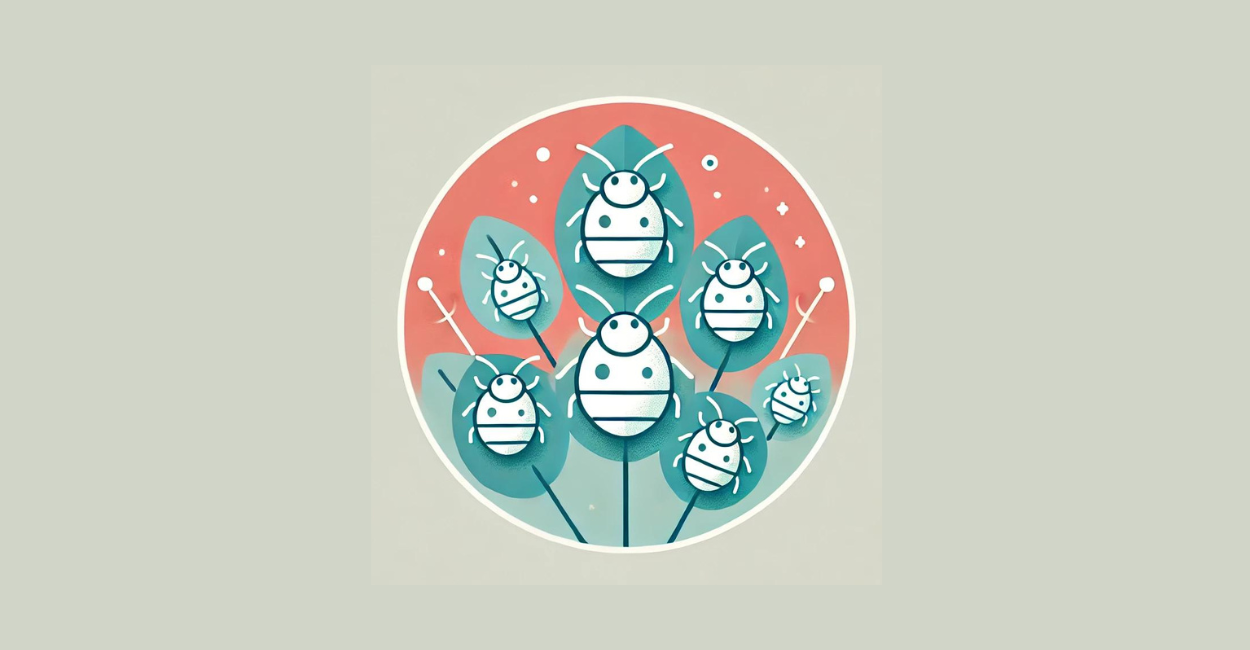Welcome to our guide on "Mealybugs in Cannabis Cultivation". These tiny cotton ball impersonators may look harmless, but they can cause chaos in your garden faster than a squirrel on espresso. We'll walk you through how to spot mealybug damage, share insights on their feeding habits, and provide proven methods to evict these unwelcome guests from your plants. Get ready to take back control and keep your cannabis crop thriving.
Identifying Mealybugs on Cannabis Plants
Mealybugs are small, sap-sucking pests that can cause significant damage to cannabis plants. These pests vary in appearance but are often identified by their white, fluffy substance. They are similar to scale insects, thrips, and aphids in the way they suck plant sap and cause damage. From our extensive experience in cannabis cultivation, early identification and treatment are crucial to maintaining healthy plants.
Signs of an Infestation:
- White, fluffy substance: Often visible on stems and leaves.
- Honeydew excretions: Sticky substance that attracts ants and promotes fungal growth.
- Weakened plant growth: Due to the sap-sucking activity of the mealybugs.
- Yellow or translucent spots on leaves: Caused by feeding damage.
Similar pests that cause damage to cannabis plants include:
- Scale Insects: These pests attach themselves to stems and leaves, causing similar sap-sucking damage and excreting honeydew.
- Thrips: These tiny insects puncture plant cells to feed, leading to silvering or stippling on leaves and potential virus transmission.
- Aphids: These common pests also suck sap from plants, causing yellowing and deformation of leaves, and excrete honeydew.
Causes of Mealybug Infestation
Several factors can lead to a mealybug infestation:
- Improper pH levels: In the growing medium, improper pH levels can affect plant health, making them more susceptible to pests. It is important to regularly check and maintain the pH level within the optimal range.
- Poor soil drainage: Poor drainage leads to waterlogging, which weakens the roots and makes the plant more susceptible to mealybugs. Good drainage ensures excess water flows away, keeping the roots healthy.
- High humidity: A humid growing environment promotes the multiplication of mealybugs. It is crucial to monitor and regulate humidity levels to create a dry and well-ventilated environment.
- Over-fertilization: Excessive fertilization leads to overproduction of sap, attracting mealybugs. Balanced nutrient supply is essential to promote healthy growth and avoid pest infestation.
Based on our experience, it is important to control these factors to prevent an infestation. Regularly checking growing conditions and adjusting care can help maintain plant health and keep mealybugs at bay.
Prevention and Treatment of Mealybug Infestation
Effective prevention and treatment methods include:
Environmental Control
Maintaining optimal environmental conditions is crucial for preventing mealybug infestations. We have found that proper temperature and humidity control significantly contribute to prevention.
- Temperature: Keep the temperature around 20-25°C.
- Humidity: Lower humidity levels to deter mealybugs.
- Air circulation: Use fans to improve air circulation.
Pruning and Cleaning
Regular pruning and cleaning can help reduce and control mealybug populations. Our practice shows that removing infested parts effectively prevents spread.
- Pruning: Cut off infested areas and dispose of them to prevent the spread of mealybugs.
Spraying
Spraying plants can help reduce mealybug populations. A neem oil solution has proven particularly effective.
- Neem Oil Solution: Mix 1 teaspoon of neem oil with 1 liter of warm water, add 5 drops of dish soap, shake well, and spray. This mixture helps repel and combat mealybugs.
Biological Insecticides and Soaps
Biological insecticides and soaps are effective for treating mealybug infestations. From our experience, these methods are most effective, and with proper application, significant damage can be avoided.
- Essentria IC3: Apply daily. This product is effective for 8-12 hours.
- Spinosad: Spray directly on the plants or add to the irrigation water for systemic treatment.
- NukeEm: Apply to plants to kill mealybugs in all stages of development.
- SM-90: Mix with water and spray on the plants. This product is known for its effectiveness against mealybugs.
- Insecticidal Soaps: Apply to infested areas. Avoid direct application on flowers to prevent residues.
Essential and Horticultural Oils
Essential and horticultural oils can be used to combat mealybugs. Our crew has found these oils particularly effective when applied regularly.
- Neem Oil, Eucalyptus Oil, Cinnamon Oil, Lemon Oil, Peppermint Oil, Rosemary Oil: Mix with water and spray on the plants. Avoid spraying on flowers to prevent residues.
- Horticultural Oils: Regularly apply oils like canola oil, soybean oil, or cottonseed oil to treat the plants.
Introducing Beneficial Insects
Introducing natural predators of mealybugs can help control their populations. In our experience, these biological methods are highly effective and environmentally friendly.
- Ladybugs: Introduce as larvae or adult insects.
- Lacewings: Purchase lacewing eggs or larvae.
- Parasitic Wasps: Use parasitic wasps to target mealybugs.
Important Note:
Effectively combating mealybugs on your cannabis plants is crucial for their health and productivity. If you notice signs of infestation such as white, fluffy substances or honeydew, adjust your pest control measures. Introducing natural predators can help eliminate mealybugs. Always monitor the growing environment, as maintaining optimal conditions can prevent infestations. For more information on combating mealybugs, see our article Beneficial Insects in Cannabis Cultivation against Mealybugs.
Conclusion:
Mealybug infestations can significantly affect the growth and yield of cannabis plants. Early detection, proper treatment, and preventive measures are essential. Our experience shows that a proactive approach and the use of effective pest management strategies ensure healthy, productive cannabis plants.
Disclaimer
This website's content is for informational use only and should not be considered medical or legal advice. Always consult a healthcare professional for health-related issues. Be aware of local regulations regarding cannabis cultivation. We are not liable for any actions taken based on this information.

